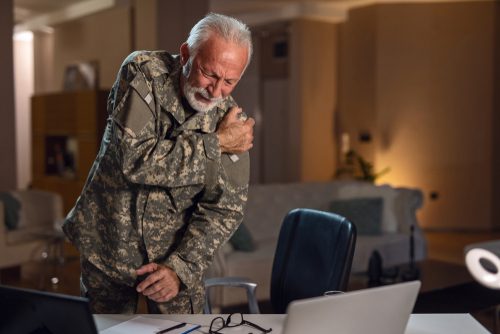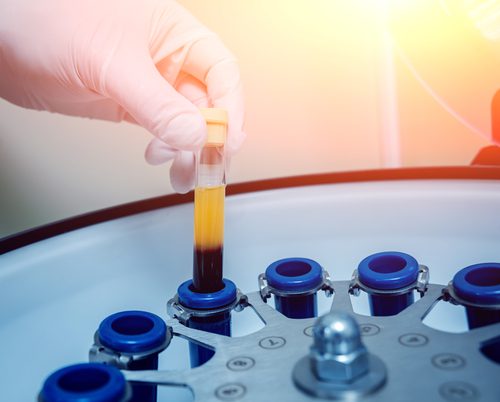I want to extend a heartfelt thank you to all of our active duty and veteran military members. As a former military physician, I have firsthand knowledge of the physical and emotional strain that comes with the job. The physical stress is often inherent to the job itself with increased demands during training and in combat. With the numerous military bases in Texas, we at CHARM often meet with active duty and veteran military members with acute and chronic injuries.

In a report published in Sports Medicine and Arthroscopic Review, the researchers determined that, in all, noncombat musculoskeletal injuries (MSKI’s) cause 25 million days of limited duty and drive more than two million clinic visits per year. Total costs for these injuries exceed $3.7 billion annually (https://pubmed.ncbi.nlm.nih.gov/31361716/).
How Do Military Training Injuries Occur?
Training injuries are often due to the combination of overuse and improper technique. Overuse injuries are especially common in basic training. This is a situation where individuals with less than optimal conditioning are thrust into an environment of heavy physical strain compared to baseline. This increased demand can be compounded because the training may involve carrying heavy equipment and wearing shoes/clothing that is not optimal for exercise.

Common injuries can include stress fractures, knee ligament, tendon or joint issues, back pain, sprained ankles and rotator cuff injuries. With ongoing training and improper treatment, even small injuries can lead to the potential for increased tissue damage. Not only can this cause increased pain and debility, but we can also see downstream damage at other body parts because of altered movement patterns from guarding and overcompensation. Over time, we can see more degenerative issues such as arthritis, degenerative disc disease and chronic tendinopathies that can linger well beyond the service members’ time in the military.
How Do You Treat Military Training Injuries?
It is critical to address these types of injuries early and in a proper manner. Unfortunately, these injuries are often treated with strategies to reduce pain quickly in order to get the member combat ready as soon as possible. These treatments may involve ice, NSAIDs and steroids. The problem is that while these strategies decrease pain, they also delay, or reduce the capacity for tissue healing. This is because the natural tissue repair relies on our body’s inflammatory process. So, these therapies stop our body’s mechanism of repair (https://charmaustin.com/recovery-from-athletic-injuries-meat-over-rice/).
A better strategy for addressing the typical military injuries includes relative rest, physical therapy to address mechanics and muscular stability as well as possible treatments to encourage tissue healing. One of the safest and most effective forms of treatments for musculoskeletal injuries involves use of orthobiologics, or Regenerative Medicine Treatments, such as Platelet-Rich Plasma (PRP)and Bone Marrow Aspirate Concentrate stem cell therapy(BMAC). Here, physicians can focally inject any combination of platelets or stem cells into areas of chronic tissue damage. This initiates the physiologic process of repair and can help facilitate the remodeling of damaged tissue into a strong, supportive structure again.
Regenerative Medicine at CHARM
The Benefits Of PRP Treatment
- Stimulates your body’s natural healing response to injured ligaments, tendons, cartilage
- Contains an abundance of beneficial growth factors
- Provides a vigorous “kick-start” to the repair process
- Used around the world by professional athletes
- Minimal down time compared to surgery
- PRP injections are minimally invasive effective technique with decades of clinical studies

BMAC Therapy At CHARM
- Powerful comprehensive treatment for the repair of tendon and ligament injury
- Decreases pain associated with degenerative joint disease
- Introduces new viable cells directly to the area for sustained healing
- Provided on-site through a 2-hour non-surgical procedure
- Minimal downtime with rapid return to normal daily activities
- FDA compliant use of your body’s own stem cells
Platelet Rich Plasma and BMAC are often not a covered service by many insurance providers. Tricare, however, has shown its commitment to providing excellent medical care to its members by covering PRP for conditions such as knee arthritis and tennis elbow (lateral epicondylitis). https://www.tricare.mil/Plans/SpecialPrograms/ProvisionalCoverage.

Board-Certified Physical Medicine & Rehabilitation by ABPMR and AOBPMR
Fellowship-Trained and Board-Certified in Pain and Musculoskeletal Medicine




